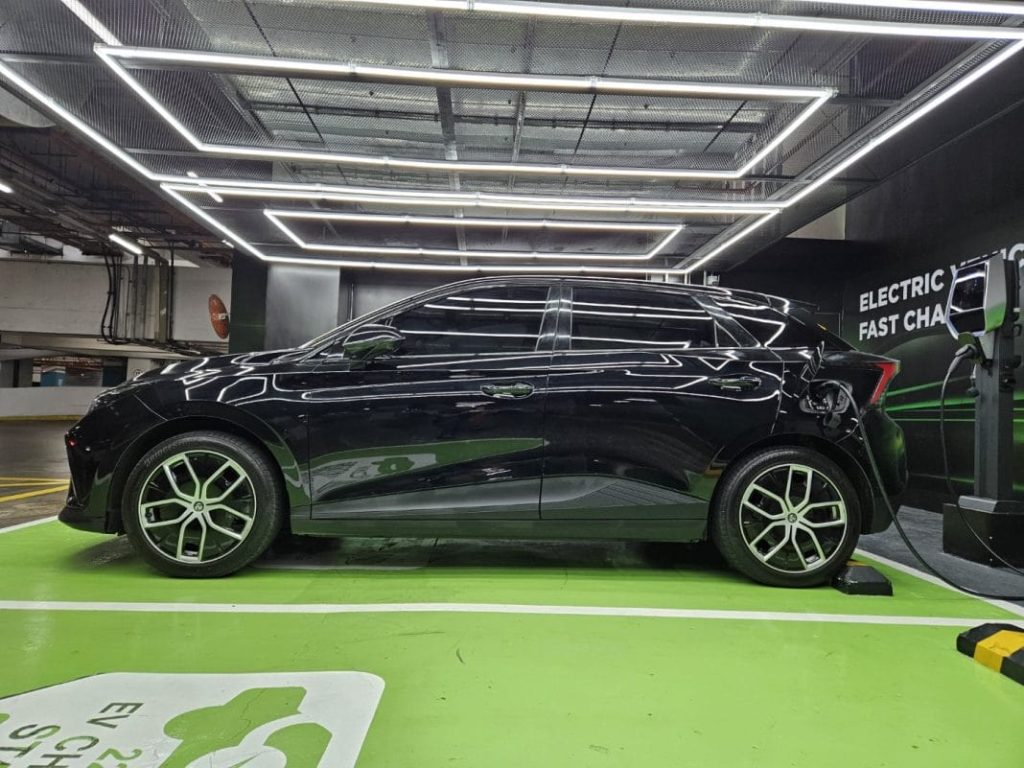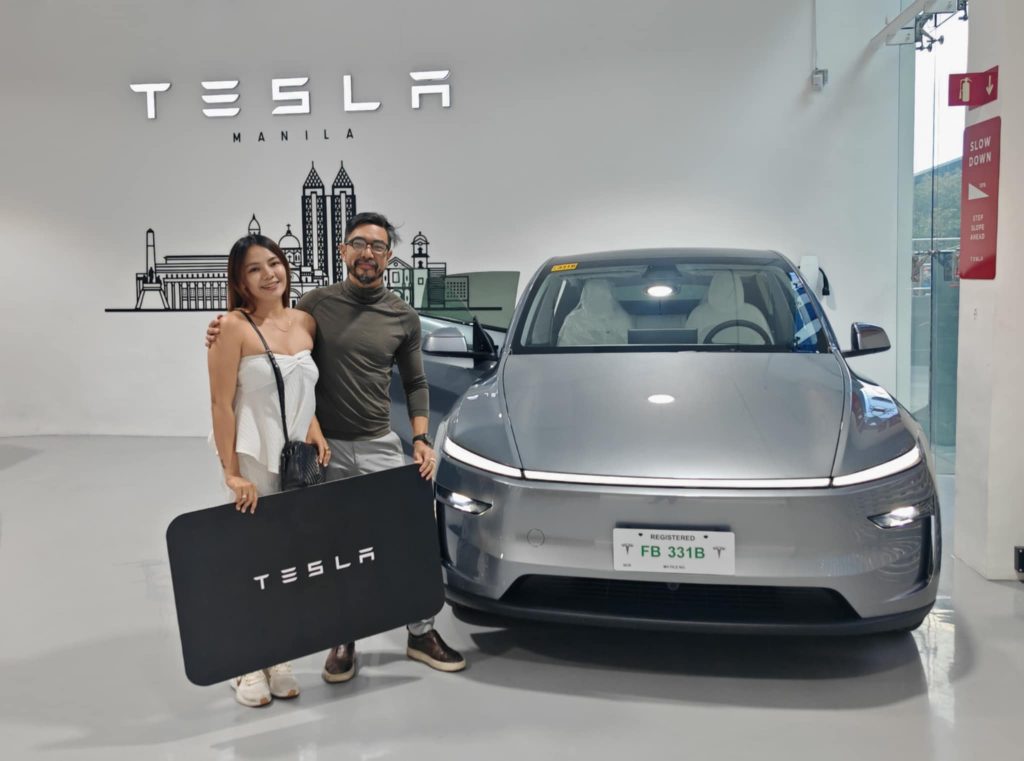If you’ve been in a Metro Manila traffic jam anytime in the last few months – and honestly, who hasn’t – you’ll probably have noticed a growing number of interesting new makes and models amongst the cars around you. This silent-running, green-plated smorgasbord includes newcomers like BYD, Tesla, Dongfeng, and Vinfast, as well as legacy manufacturers like Hyundai, Kia, and Nissan … all of them sporting electric motors and battery packs under the hood.
Their growing popularity is the result of both a strong government incentive program and the fact that they are objectively superior to most of their fuel-based counterparts: they’re coding-exempt and cheap to own. By most calculations, replacing your gas car with an EV reduces your operational costs by more than 50%. This includes obvious things like the cost of electricity versus the cost of fuel, as well as periodic maintenance activities like oil changes and tune-ups, which simply disappear. Even your brake pads last twice as long on an EV, because the motor assists in deceleration (and even recharges the battery while it’s at it).
An accelerated roll-out
It’s been two years since the Chinese giant BYD first launched here in the Philippines, and just under a year since American-made Tesla’s own debut. The two brands are leading the pack in terms of units sold, although as is the case in most other arenas, the Chinese are in a class of their own. Offered locally in partnership with Ayala Corp, BYD is the only EV manufacturer in the country to have reportedly crested five digits. Their rapid expansion has seen showrooms as far south as GenSan, with 30 dealerships overall. Tesla meanwhile announced that it had just recently released its 1,000th car from its one and only showroom in Uptown, BGC.
But personal transportation is not the only area where EVs are becoming more visible. In April, Valenzuela City purchased 41 of BYD’s ultra-compact Dolphin model for its police force and city officials. In June, the Vietnamese upstart Vinfast launched its Green GSM electric taxi service, reportedly operating a fleet 2,500-strong. In the same week, ride-sharing leader Grab also launched its own EV taxi service in partnership with BYD.
The mythical range anxiety
Alongside the proliferation of electric cars are their necessary support systems. With over 900 public charging stations around the country reported by the Department of Energy, EV owners are unlikely to be stranded anywhere in Metro Manila without a closeby charger. Of course, EVs are routinely sold with an official wall charger that you can install in your garage, so keeping your car topped-up is simply a matter of plugging it in when you get home. And with most EVs now capable of driving over 400km on a full charge, popular destinations like Baguio city in the North or Laiya in the South are no longer considered out of range.
This so-called “range anxiety” is now more emotional rather than rational. That being said, it’s this singular mental hurdle that is likely the biggest reason that EVs haven’t been adopted more rapidly. Range anxiety has also given rise to a new generation of hybrid models collectively referred to as Plug-in Hybrid Electric Vehicles.
As their name implies, PHEVs use a drivetrain powered by both a modest battery pack and a combustion engine with a traditional gas tank. A PHEV’s real-world range is typically in excess of 700 km – more than enough for a weekend trip to Baguio City and back without needing to refuel. There are trade-offs, of course: the presence of an engine means that a PHEV is not silent, and its complex powertrain means that maintenance cycles more closely resemble those of a traditional gas car than an electric one.
BYD’s lineup is particularly well tuned for this category: the Sealion 5 and 6 models are amongst the most common PHEVs plying Manila roads today, and at just 1.15M and 1.6M pesos respectively, it’s easy to see why.
An EV for every budget
You may be surprised to know that some EVs go for essentially the same price as a Toyota Vios – the BYD Seagull, the Changan Nevo, the Vinfast VF3, and the Dongfeng Nanobox are all well-under the 1M peso price barrier. Although these vehicles won’t be winning any awards in the “creature comforts” category, they completely disprove the idea that EVs are only for the wealthy.
Above 1M pesos, things start to get interesting: this crowded segment includes the sporty “hot hatch” MG4, the Mini Cooper-inspired GWM Ora 3, and even a pair of Innova killers, the BYD EMAX7 and GAC AION Y.
As we go up the price ladder, the more premium brands take over. The Tesla Model 3 begins at 2.1M pesos for its RWD model, and the world’s bestselling vehicle for 2024, the Tesla Model Y, starts at 2.4M.
In the 3M range, Hyundai’s Ioniq and Kia’s EV lineup take centerstage, offering familiar badges and driver experiences, as well as some truly distinct design decisions. The Ioniq 5 and 6 in particular are, in this writer’s humble opinion, among the finest vehicular stylings available today. Amongst the new Chinese entrants, Zeekr, Xpeng, and Hongqi all offer their best models in this range as well.
Above 4M, we get the Audi e-Trons and the Mercedes EQ line, and then beyond that, we have the Porsche Taycan and Macan. As we approach the 10M peso range, the Tesla nameplate reemerges with its polarizing Cybertruck, although this is only available locally via gray-market vendors. One of the only brands that starts in the 8-digit category is the British manufacturer Lotus, with its all-electric Eletre and Emeya models.

And we’re saving the planet, right?
There was a time when the only reason to get an EV was because it signalled its owner’s concern for the environment. That time has long since passed. The reason to get one in 2025 is because EVs are better on nearly every imaginable metric … the lone exception possibly being the lack of testosterone-elevating engine noise.
But in case the environmental impact of your vehicle is a priority, the data is on your side. The most recent research indicates that although EVs start off with a larger carbon footprint because of their batteries, their emissions taper off after that. Meanwhile, gas car emissions never stop increasing throughout their service life. After two years on the road, the average EV ends up 70% cleaner than its gas counterpart.
Even without that data, the lack of a smoke-belching tailpipe is a massive boon to families with children or seniors. And every extra EV means one less source of noise pollution in your neighborhood or on the road.
At the end of the day, the choice of electric versus gas is a personal one. Gas cars will continue to be relevant well into the future, and selecting an EV as your next car depends on your comfort level with new technology. There will be plenty of time for society as a whole to peacefully absorb this next wave of innovation without any disruption to our established routines.
Then again … that’s probably what people in horse-drawn carriages said about the automobile itself back in the day.


